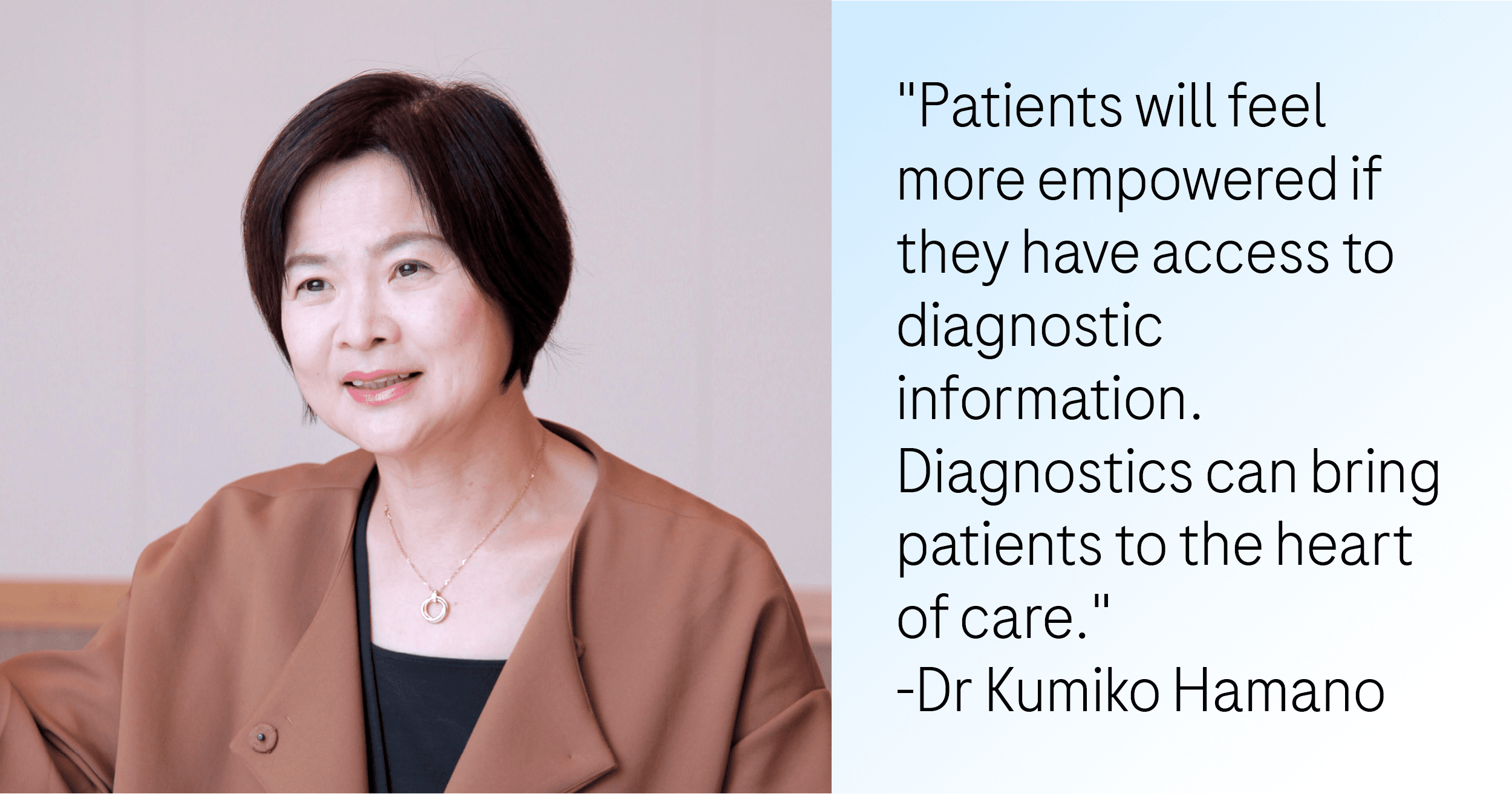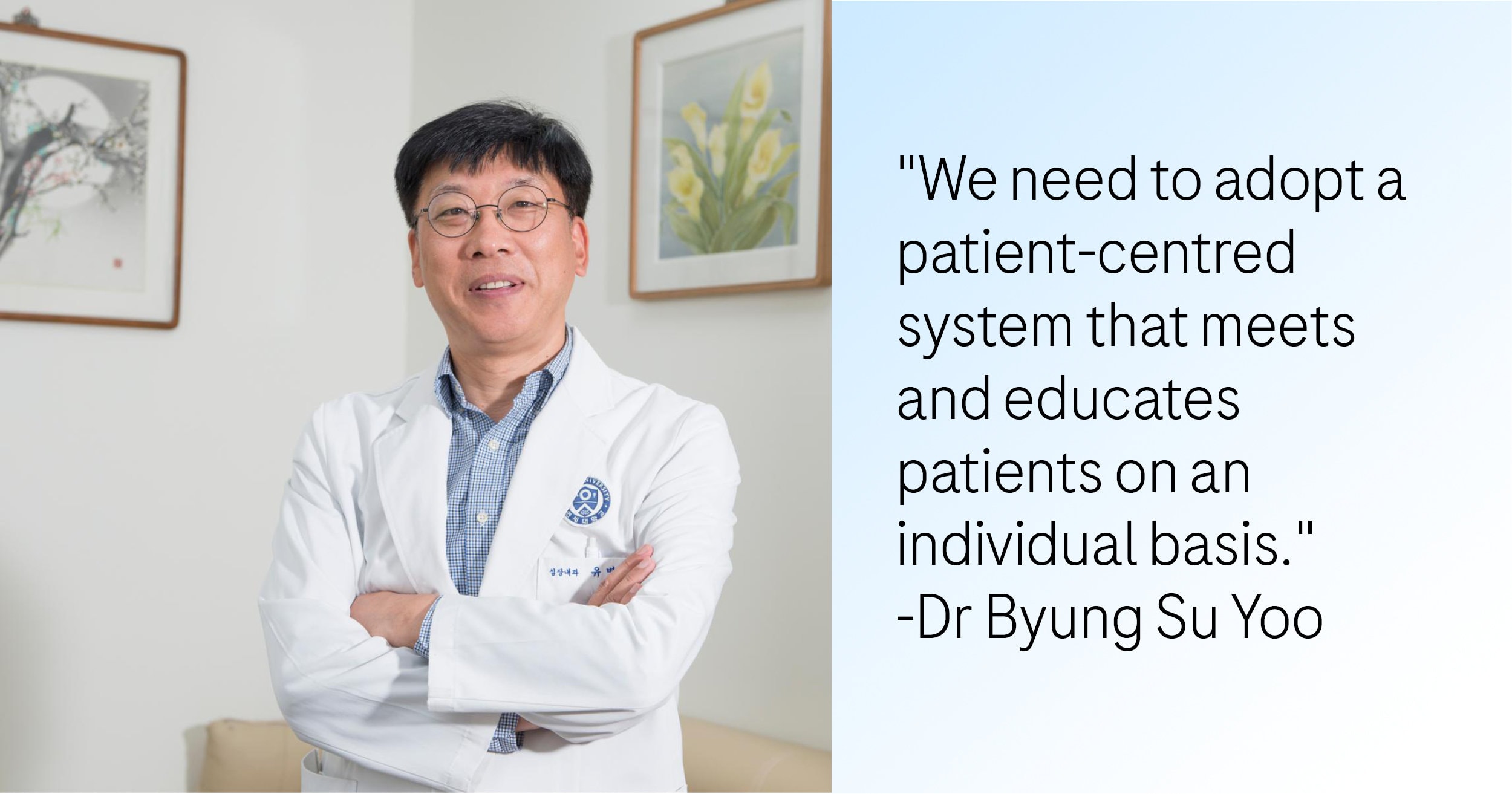Once a disease of the West, diabetes has now spread to every country. Today, more than half a billion people worldwide are living with diabetes.1 Driven by population ageing, growing prosperity and associated lifestyle changes, Asia has become its epicentre. Currently, more than 60% of people with type 2 diabetes live in Asia.2
A metabolic disorder identified by the presence of hyperglycaemia (high levels of sugar in the blood), diabetic patients are also at a higher risk of developing cardiovascular diseases (CVD).3 In fact, heart failure is the second most common cardiovascular event that manifests in patients with type 2 diabetes.4
Health experts often talk about the socio-economic “burden” of diabetes. In low- and middle-income countries (LMICs) where three out of four adults live with diabetes, there is huge prevalence. Many are underserved and disproportionately affected by diabetes and its related complications.5 A major barrier to optimal care are the health delivery systems, which are often fragmented, lack clinical capabilities, and are poorly designed for the delivery of chronic care. Delays in diagnosis create a greater burden of disease after onset of complications.6
More and more countries in the region are now looking at innovative diagnostics as key to disease prevention and control. They are also calling for active patient involvement by encouraging individuals to take charge of their health. Expert views from Japan and Korea uncover insights on how these developed economies are leading the way in diabetes and heart failure management.
Japan: Leading the way into diabetes management
Home to the world’s oldest people, almost a third of Japan’s population is over the age of 65.7 With the rapid ageing of its society, incidence of heart failure is also on the rise. By 2030, the number of patients with heart failure is predicted to reach an estimated 1.3 million.8 Heart failure is approximately 2–8 times more prevalent in people with type 2 diabetes, its risk doubling with every decade of age.9
Approximately 13.5% of the Japanese population has type 2 diabetes or impaired glucose tolerance.10 According to Dr Kumiko Hamano, a Japanese endocrinologist from Kanto Rosai Hospital, diabetes management is a challenge for the elderly population in Japan. “The average age of most diabetic patients is over 65 years. Managing them is both time and resource intensive, and the outcomes may not be necessarily satisfactory.”
Although citizens have access to free medical facilities offered by a universal health insurance system, Dr Hamano says delayed screening and late diagnosis impacts treatment outcomes. “People with diabetes have no symptoms at first and many don’t make time to visit the hospital for a check-up. By the time the condition is diagnosed, the stage is advanced.” According to Dr Hamano, doctors are also unable to elicit a deeper case history due to lack of time. “Endocrinologists find it challenging to provide care when they have to attend to over a hundred patients a day. On average they spend three minutes per patient on physical examination.”
Health and long-term care spending in Japan are projected to rise sharply as more people are in need of care for longer.11 Adding to this, the country may face a shortage of healthcare professionals to deliver the care needed. Dr Hamano believes in educating patients to gain more knowledge about their health conditions and well-being. “To manage diabetes, patients need to be given more charge of their health. For instance, the self-monitoring blood sugar test in Japan is solely distributed by the hospitals and is reimbursed by the health system later,” informs Dr Hamano while adding that patients generally don’t go against the advice of their doctors. She is of the view that patients will feel more empowered and in control if they themselves have access to diagnostic information, giving them a clearer picture of their health condition. “Diagnostics can bring patients to the heart of care,” she adds.

Recognizing the need for diagnosis of cardiovascular diseases in diabetic patients, a joint consensus statement from the Japanese Circulation Society (JCS) and The Japan Diabetes Society (JDS) proposes new strategies to identify heart failure in patients with type 2 diabetes. It suggests evaluating the levels of natriuretic peptide (NT-proBNP) as a basis for the early detection and prevention of heart failure in patients with type 2 diabetes.12
Dr Hamano points out that such biomarkers are beneficial early on and only if they are performed as a routine test, preferably once a year. “They can slow down and avert heart failure in diabetes patients and should be measured at the onset of the disease diagnosis.” Having conducted NT-proBNP screenings since 2007, she says they are useful in measuring the risks a patient may face in the future.
“Biomarkers save time on managing diabetes and are an objective form of diagnostic assessment. I’ve been using it for 15 years and referring numerous patients to cardiologists. I am confident we’ve saved many lives.”
Korea: Rising to the challenge of diabetes with diagnostics
In Korea, where diabetes-related complications are the sixth leading cause of death among both sexes, doctors are identifying optimal treatment strategies for patients living with diabetes.13 According to Dr Byung Su Yoo, a cardiologist at Wonju Severance Christian Hospital in Korea, efforts are being made between specialists to narrow treatment approaches. “Korean endocrinologists and cardiologists are currently on the same page in terms of assessing the risk analysis of diabetes.”
While cardiac markers are not included in Korea’s national health screening program, its use in targeting those most at risk of heart failure and other cardiovascular diseases (CVD) holds great promise. Aiding in the detection of disease before structural and functional changes become apparent on imaging, cardiac markers can be measured rapidly through blood tests, making their widespread use more practical. Clinical studies like CANVAS (CANagliflozin cardioVascular Assessment Study) and PONTIAC (NT-proBNP Selected PreventiOn of cardiac eveNts in a population of diabetic patients without A history of Cardiac disease) highlight the role biomarkers play in providing insights into a patient’s underlying condition and the need for personalised care. Tailoring treatment outcomes to meet the specific needs of patients is an important step in the prevention, assessment, and management of rising to the challenge of diabetes with diagnostics.
“Patient-centricity is achieved when the symptoms and signs are assessed from the patient’s point of view. We should assess the patient with a view to meeting the health outcomes and goals that matter to them, and create an ecosystem that helps them have a good quality of life,” says Dr Yoo, while emphasising that patient education is just as relevant. Recognising the importance of patient-centricity, Korea is making positive changes and giving greater access to information and resources to its patients, like introducing digital apps. In fact, Korea has a well-developed system of telehealth even in rural health centres, where the government distributes digital devices for free to prevent chronic diseases like heart failure, hypertension, and diabetes.14 Such initiatives are encouraging patients to actively engage in their own healthcare decision-making from a much earlier stage.

As Korea moves steadily towards a patient-centric model of care, there are now numerous opportunities that health care providers can tap into to improve diabetes-related outcomes. Efficiency in treatment begins with correct and early diagnosis. While in the clinical lab, advancements in precision diagnostics are allowing physicians to treat patients with targeted therapies, technology too is bringing testing to people using non-traditional avenues of care. Improving the doctor-patient relationship by a focus on patient-centred care can help enhance the management and quality of life for patients. Diagnostics are not only helping doctors find better therapeutic interventions but also empowering patients to manage their disease more effectively.
References:
1 Diabetesatlas.org. 2022. IDF Diabetes Atlas | Tenth Edition, https://diabetesatlas.org/
2 Nanditha, A., et al (2016). Diabetes in Asia and the Pacific: Implications for the Global Epidemic. Diabetes Care; 39 (3), pp.472–485. Retrieved from: https://doi.org/10.2337/dc15-1536
3 World Health Organisation. “Classification of diabetes mellitus.” Geneva, World Health Organisation, https://www.who.int/publications/i/item/classification-of-diabetes-mellitus
4 AD, Shah., et al (2015). Type 2 diabetes and incidence of cardiovascular diseases: a cohort study in 1·9 million people. Lancet Diabetes Endocrinol; 3(2), pp.105-113. Retrieved from: https://www.ncbi.nlm.nih.gov/pmc/articles/PMC4303913/
5 Diabetesatlas.org. 2022. IDF Diabetes Atlas | Tenth Edition, https://diabetesatlas.org/
6 Gopalan, A., et al (2018). Prevalence and predictors of delayed clinical diagnosis of type 2 diabetes: a longitudinal cohort study. Diabet Med;35(12), pp.1655–1662. Retrieved from: https://www.ncbi.nlm.nih.gov/pmc/articles/PMC6481650/
7 Worldbank.org. (2019). Population ages 65 and above (% of total population) – Japan | Data. https://data.worldbank.org/indicator/SP.POP.65UP.TO.ZS?locations=JP
8 Okura, Y., et al(2008). Impending epidemic: Future projection of heart failure in Japan to the year 2055. Circ J; 72(3), pp.489–491. Retrieved from: https://www.jstage.jst.go.jp/article/circj/72/3/72_3_489/_article
9 Nichols, Gregory A., et al(2001). “Congestive Heart Failure in Type 2 Diabetes.” Diabetes Care; 24(9), pp.1614-1619. Retrieved from: https://diabetesjournals.org/care/article/24/9/1614/21484/Congestive-Heart-Failure-in-Type-2
10 Neville SE, Boye KS, Montgomery WS, Iwamoto K, Okamura M, Hayes RP. Diabetes in Japan: a review of disease burden and approaches to treatment. (25 Nov 2009) Retrieved from: https://pubmed.ncbi.nlm.nih.gov/19795421/#:~:text=Approximately%2013.5%25%20of%20the%20Japanese,of%20the%20total%20healthcare%20budget
11 McGrattan, E.R., Miyachi, K. and Peralta, A. (2018). On Financing Retirement, Health, and Long-term Care in Japan. IMF. https://www.imf.org/en/Publications/WP/Issues/2018/11/28/On-Financing-Retirement-Health-and-Long-term-Care-in-Japan-46355
12 Node, Dr Koichi. 2021. “CVD Management in T2DM – JCS and JDS Joint Consensus – Cardio ThinkLab %.” Cardio Think Lab. September 16, 2021. https://cardiothinklab.com/cvd-management-in-t2dm-jcs-and-jds-joint-consensus/
13 Statistics Korea: Causes of death statistics in 2018. Available from: http://kostat.go.kr
14 Jae Yoon Yi, Yujin Kim, Yoon-Min Cho, and Hongsoo Kim. 2018. Self-management of Chronic Conditions Using mHealth Interventions in Korea: A Systematic Review. Retrieved from: https://www.ncbi.nlm.nih.gov/pmc/articles/PMC6085202/














